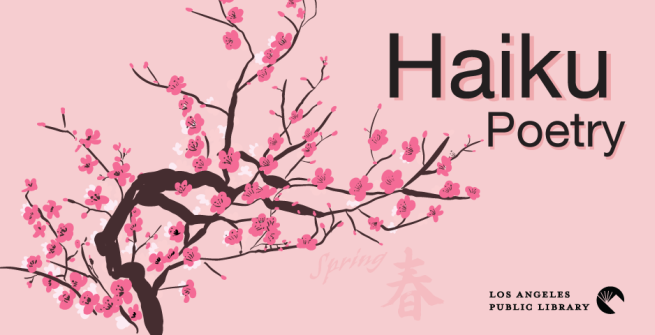In 1999, the United Nations selected March 21st as its official World Poetry Day. The idea was to set aside one day each year to celebrate poetry’s unique ability to express the deepest and most universal aspects of the human condition.
Which is a lovely idea, but where to begin? There are so many forms of poetry—limericks, elegies, villanelles, ballads, blank verse, sonnets, quatrains, odes—that celebrating them all would be a pretty tall order. So in the interest of keeping things short and sweet, let’s take a peek at haiku.
Of all the forms of poetry that have emerged over the millennia, none is as seemingly accessible yet murkily understood as the humble haiku. You probably learned the format back in elementary school—17 syllables divided into three lines of 5, 7, and 5. The subject matter of a haiku is usually drawn from nature, and the overall effect should be one of sparseness without linguistic trickery. Despite the brevity of its form, haiku is demanding to read. Because it is so spare, haiku requires a sensitive reader to fully flesh it out, completing a circuit that connects the dots between nature, mind, and art.
The earliest form of haiku dates back to Japan’s Heian period (700-1000 AD). Short forms of poetry were popular then, and it was fashionable to entertain your friends by reciting poems called tenka, which were written in the 5-7-5 triplet format, followed by a couplet of 7 syllables. From this form rose the renga, which were chains of linked triplets written by several people on a given theme. The composition of these linked poems served as a kind of parlor game for the Japanese elite. It was not until the 17th century that master poet Matsuo Basho popularized the stand-alone haiku triplet. Here is an example of his work:

the first cold shower;
even the monkey seems to want
a little coat of straw.
The genius of Basho lies in the way he paints such an evocative picture with so few words. The reader can see the gray rain, the muted green of the trees, and the face of the little monkey shivering in the cold.
The first known Westerner to write haiku was Dutchman Hendrik Doeff (1764-1837), who learned about the form while working at a trading post in Nagasaki. Doeff wrote haiku in Japanese, but here is a translation of his work:

lend me your arms,
fast as thunderbolts,
for a pillow on my journey
The poem was supposedly inspired by a young lady Doeff saw working at an inn who could slice tofu very fast.
Haiku was introduced in France circa 1906 by poet-philosopher Paul-Louis Couchoud. His articles on the subject influenced members of London’s illustrious Poets’ Club, which led to the first haiku written in English—In a Station of the Metro by Ezra Pound, which was published in 1913:

The apparition of these faces in the crowd;
Petals on a wet, black bough.
In Spain, several prominent poets experimented with haiku—among them, Federico García Lorca, who learned conciseness from the form by writing a series of haiku for his mother while he was still a student in 1921.
Mexican poet Octavio Paz included many haiku in his 1955 collection Piedras Sueltas. Here is a good one:

your face a lake
smooth, without thoughts
out splashes a trout
Beat poet Jack Kerouac played with the form as well, resulting in his 1956 manuscript Desolation Pops: Seventy-two Haiku Experiments, and Trip Trap: Haiku Along the Road from San Francisco to New York, which was published in 1959. Here is a Kerouac haiku:

Missing a kick
at the icebox door
It closed anyway.
Poet Marilyn Chin was born in Hong Kong in 1955 but grew up in Oregon. She has won numerous awards, including the PEN/Josephine Award, multiple Pushcart Prizes, and fellowships from Harvard, the Rockefeller Foundation, and the National Endowment for the Arts. Here is a haiku from her 2014 poetry collection Hard Love Province:

Don’t touch him, bitch, we’re engaged; and besides, he’s
wearing my nipple ring
Hmmm. What would Basho say?
Did you notice how each of the poems above drops you into a slice-of-life moment so vivid you’re practically there? That is the beauty and challenge of the humble haiku, a deceptively simple poetic form that has been practiced by schoolchildren, poets, and regular civilians alike. Which leads me to my final question:
Do you haiku?
Or perhaps more to the point:
Would you like to haiku?
If the answer is yes, you are cordially invited to attend our Ransom Note Haiku program on Saturday, April 7 in the fabulous Central Library rotunda. Come and create your own haiku using words cut out of old magazines!
If you just can’t wait that long to get started, then here’s what you do—go outside, take a walk, or just look out a window. Keep it simple. Get inspired.
Maybe you’ll see some chick slicing tofu really super fast.
